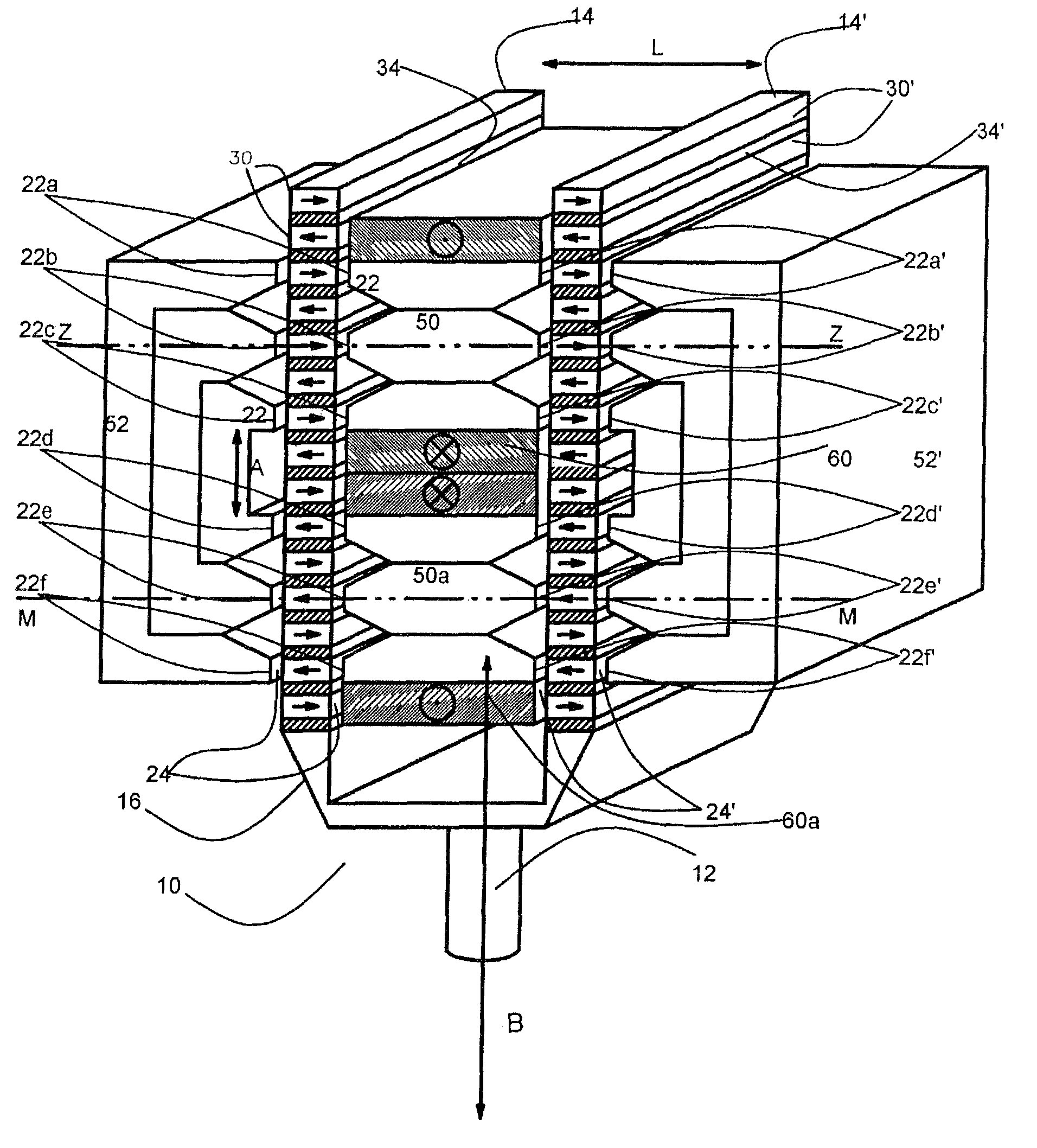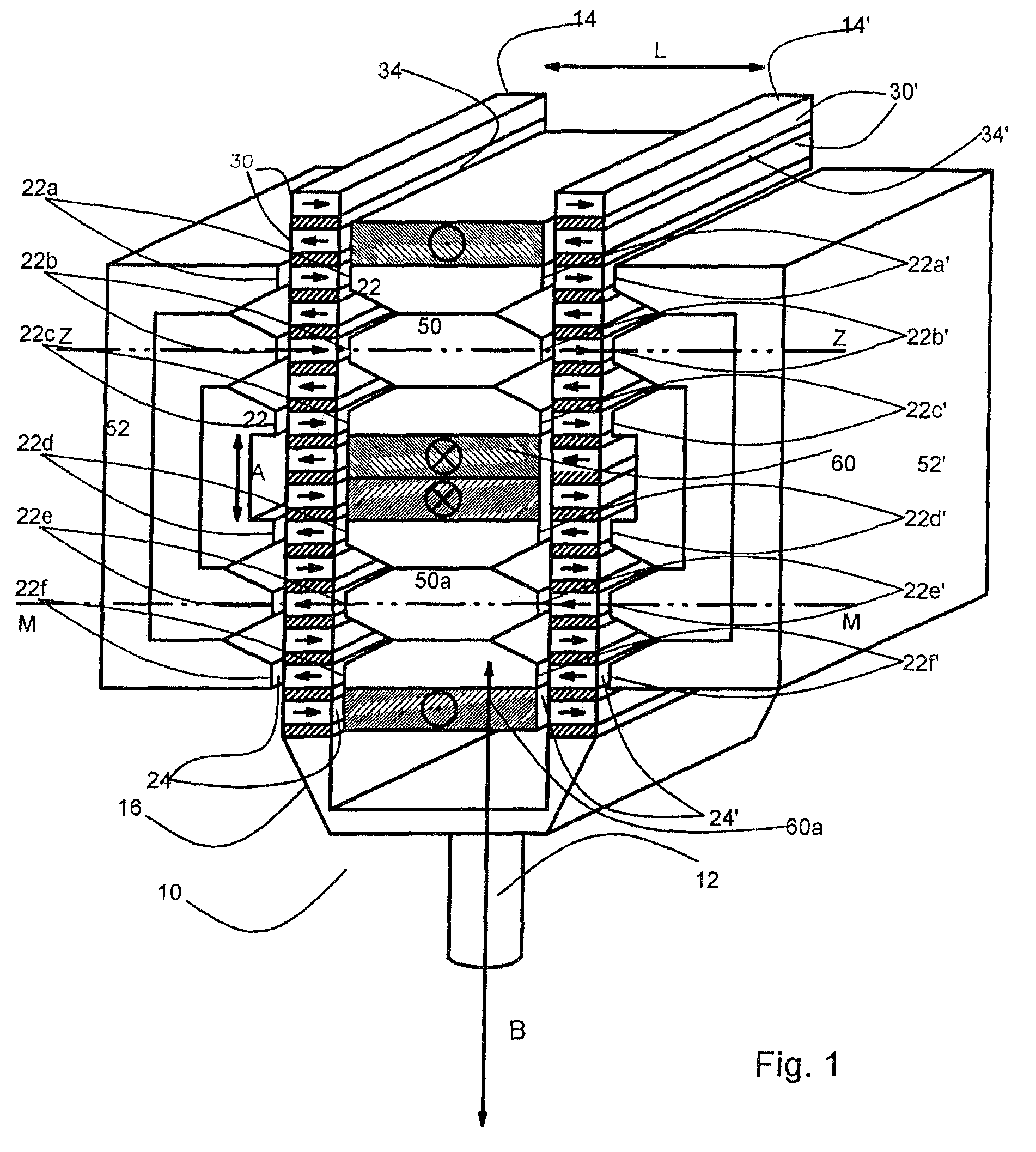Linear actuator
a technology of actuators and actuators, applied in non-mechanical valves, magnetic circuit shapes/forms/construction, machines/engines, etc., can solve the problem of high production cost of arrangemen
- Summary
- Abstract
- Description
- Claims
- Application Information
AI Technical Summary
Benefits of technology
Problems solved by technology
Method used
Image
Examples
first embodiment
[0042]In FIG. 1, an electrical linear actuator 10, which has a rotor 16 and a stator 18 which are connected via a rod 12a to a part (not illustrated) to be driven, is illustrated. Those skilled in the art understand that the term “rotor” is used broadly to identify a moving element even though the motion is translational and or rotational. In the following description the rotor 16 translates and reciprocates along its axis.
[0043]The rotor 16 has two parallel stacks 14, 14′, which are arranged at a distance L from each other, of multiple permanently magnetic rods 30, 30′, which are of essentially cuboidal shape and arranged one above another.
[0044]The stator 18 is in the form of a soft magnetic mould of sintered ferrous metal powder or layered iron sheets. The stator 18 has multiple tooth pairs 22a, 22a′; 22b, 22b′; 22c, 22c′; 22d, 22d′; 22e, 22e′; 22f, 22f with teeth 22 opposite each other. Between the teeth 22 of each tooth pair, one of the two stacks 14, 14′ is received, forming a...
second embodiment
[0053]In FIG. 5, an electrical linear motor 10 is illustrated. The reference symbols which are used in the previous figures designate parts or components with the same or comparable function or method of working, and are therefore explained below only to the extent that their tangible form, function or method of working differs from what is described above.
[0054]In the case of this embodiment, the rotor 16 has a stack 14 of multiple permanently magnetic rods 30, which arranged one above another and of essentially cuboidal shape. The stator 18 is in the form of a soft magnetic sheet metal packet stack. The stator 18 has multiple tooth pairs 22a . . . 22f with mutually opposite teeth 22. Between the teeth 22 of a tooth pair, the stack 14 is received, forming an air gap 24 and 24′ respectively.
[0055]On one side of the stack 14 of the rotor 16 (on the right-hand side in FIG. 5), the stator 18 has two magnetically conducting inner areas 50, 50a, which in the direction of motion B of the ...
PUM
 Login to View More
Login to View More Abstract
Description
Claims
Application Information
 Login to View More
Login to View More - R&D
- Intellectual Property
- Life Sciences
- Materials
- Tech Scout
- Unparalleled Data Quality
- Higher Quality Content
- 60% Fewer Hallucinations
Browse by: Latest US Patents, China's latest patents, Technical Efficacy Thesaurus, Application Domain, Technology Topic, Popular Technical Reports.
© 2025 PatSnap. All rights reserved.Legal|Privacy policy|Modern Slavery Act Transparency Statement|Sitemap|About US| Contact US: help@patsnap.com



